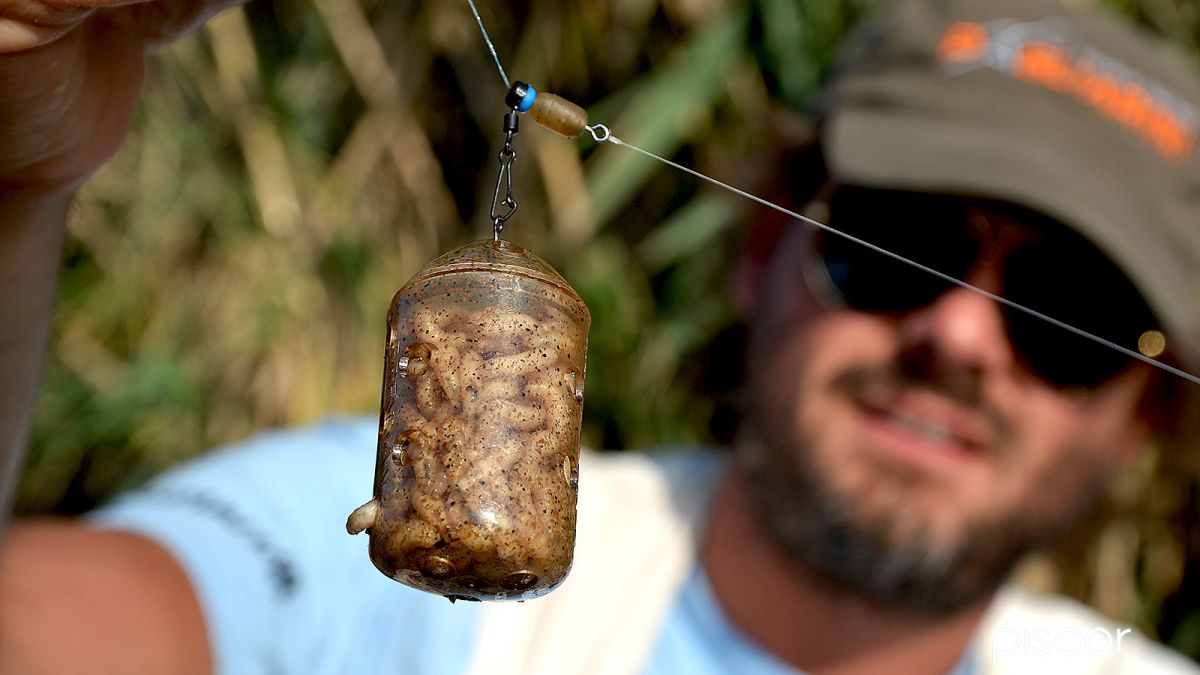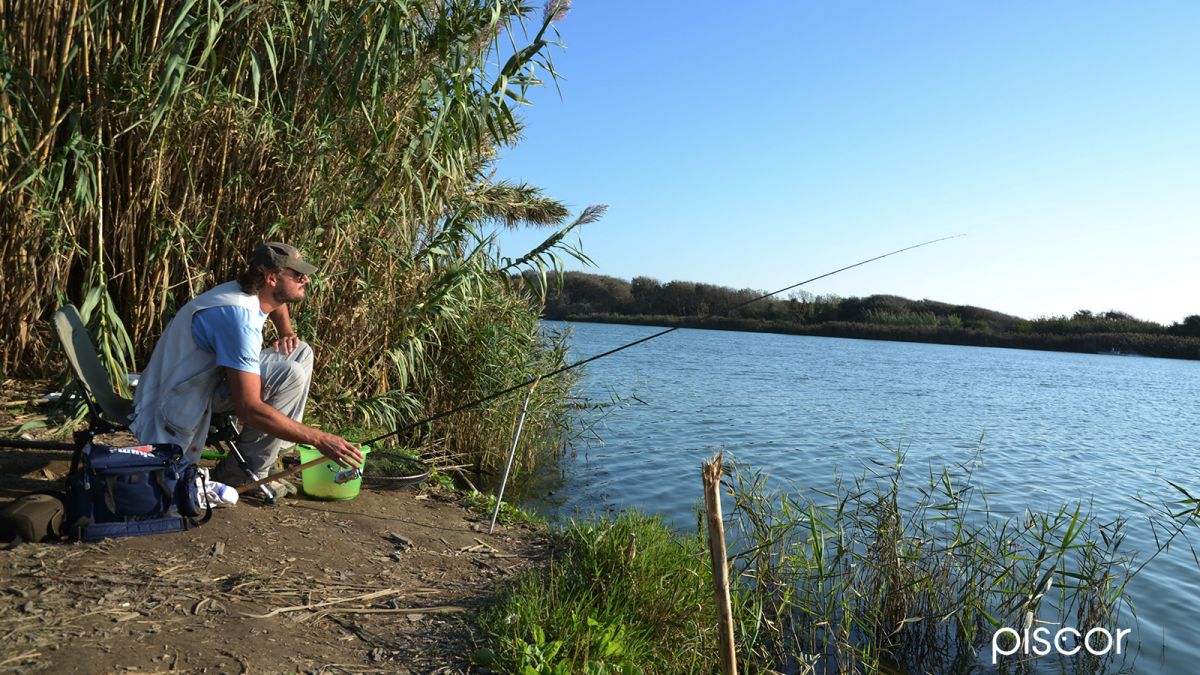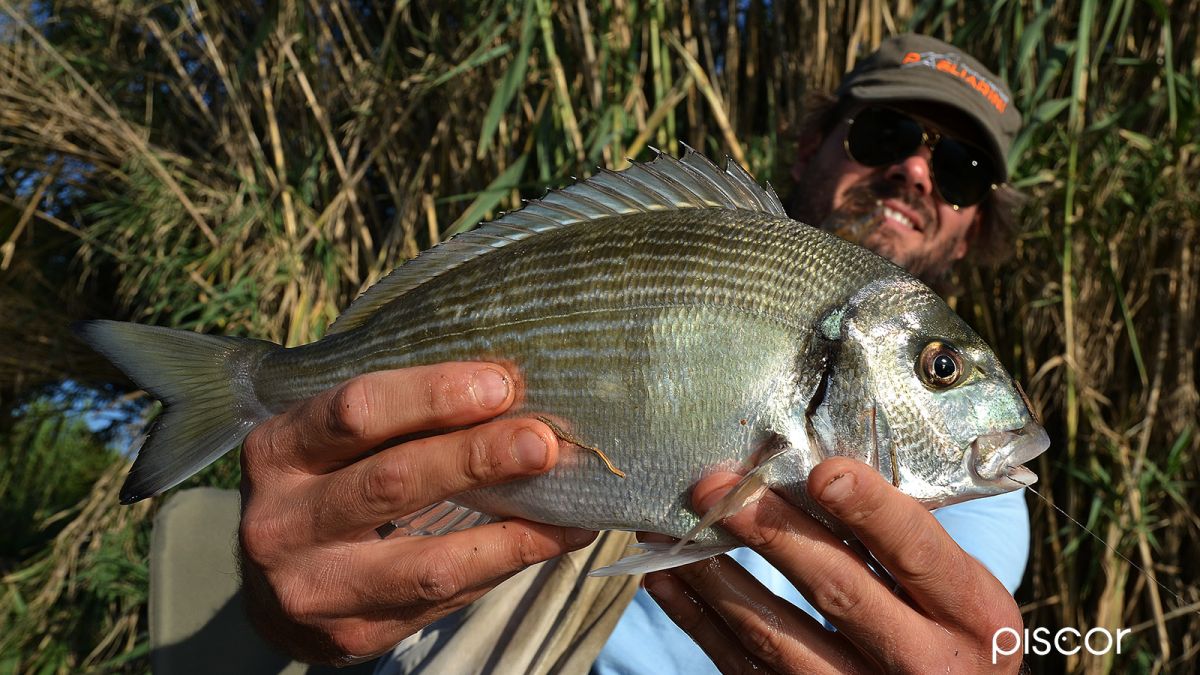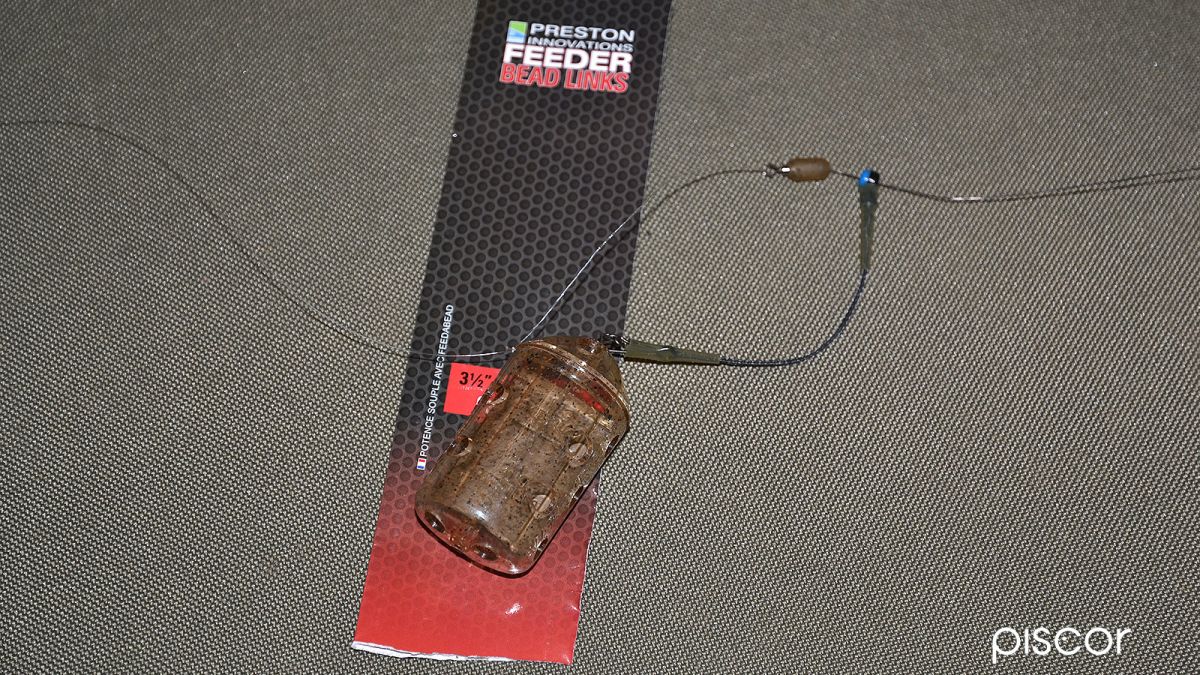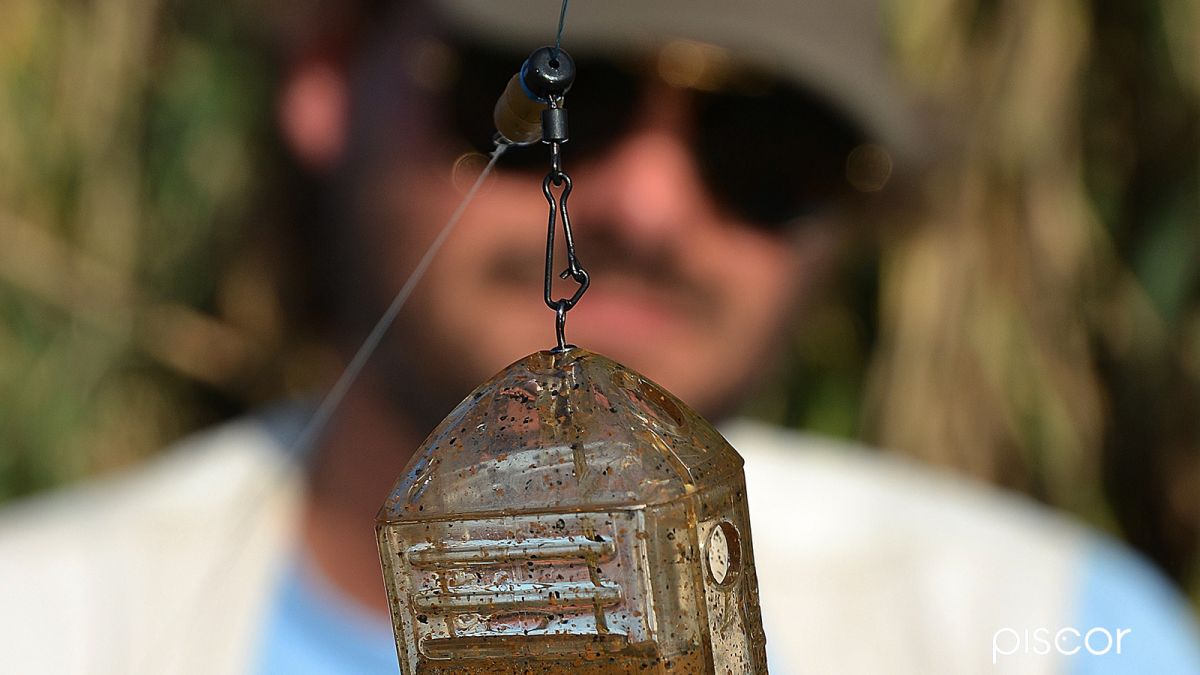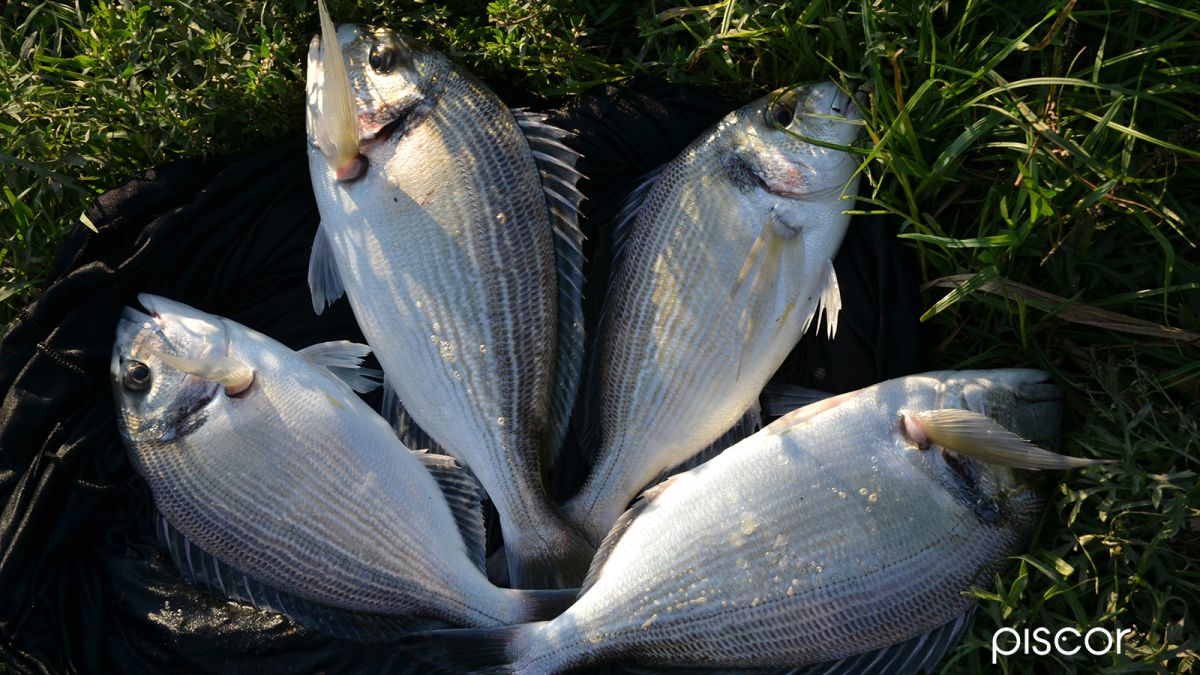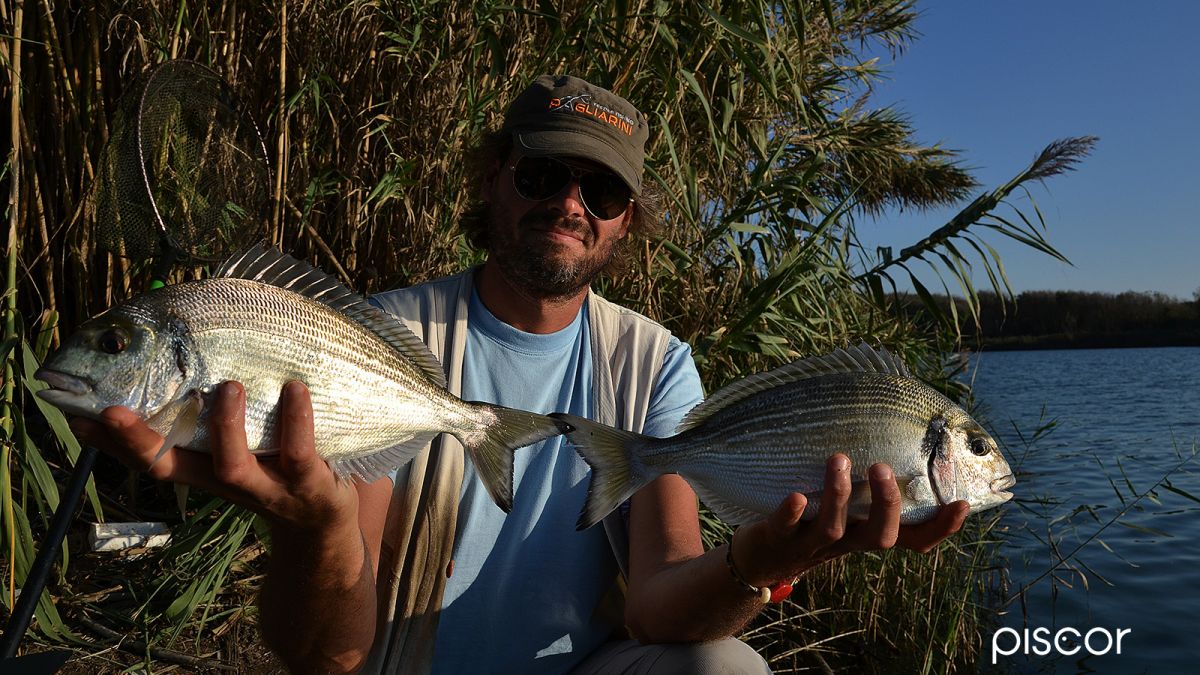An Anglo-Saxon extraction technique that is however affecting a good mass of fishermen who mostly practice it in its place of origin, fresh water, but that also gives excellent results in salt water, especially in the mouth where the movements of the tide move masses of water interesting generating very productive flows for fishing and feeder that is deadly in areas where the current is felt.
We point out immediately that, in all the mouths, none excluded, the current will never be homogeneous, during the rising tide, except in very rare cases, so we meet the feeder always ensuring a constant baiting thanks to the exit of the maggots by the feeder who helps to feed the fishing line.
But be careful, if the current does not go in the right way, we will not see even a move, while fishing at feeder, during the tide can happen, just stay calm, continue to fish and wait for the right time that will come for sure.
Each spot has its own story, the photos were taken at the natural mouth of a river. In this spot, with natural mouth, will be the weather conditions to determine the trend of the fishing season because the mouth, sometimes, because of the rains too little compared to the storms can become very narrow and low preventing fish from entering.
Especially in periods where the water level drops dramatically, the best times to fish are at the peak of low and high tide because it will be in that precise period of time that we will have a more than acceptable current that will put some fish into operation.
Ultralight and Bow Method
In this specific case we will be forced to fish lightly despite the current that, at certain times, is pressing. This choice is mainly dictated by the softness of the bottom on which we will act. Often a backdrop of mixed sand and mud, so very soft.
If we face the spot with too heavy feeders, we risk sinking them, making the fishing action meaningless. We are in the order of twenty, maximum thirty grams, so to be in fishing, the best system is that of the "Bow Method".
The arch method allows us to set up a stable structure even with light ballasts thanks to the arch created by the line under the surface, as large as the amount of line we give in excess after the launch. This belly has the task of damping the thrust of the water by making the light ballast be in fishing.
The tip will not suffer a too pronounced bend and the bite will occur with a starry of the same making the fish remain self-hooked. Throw it upstream, once the ballast has taken the bottom, we will give excess wire about one and a half times the length of the rod and place it on the stake.
Classic approach
We're gonna go after sea bream, sea bass and mullet most of the time. Fish that respond very well to the maggots in bulk, so the use of a block end becomes a priority. We have to drop the choice on all those models with fairly wide holes because the species we are going to undermine love to get on the exit of the maggots, especially if the latter is important.
They come in their wake and we must be very good at presenting the deception among the larvae in bulk. This requires maximum attention to the precision of the launch and the length of the rig.
Paternoster running rig
This type of approach is most effective on pebble-free seabeds, with slow or moderate current. The length of the snood where we are going to connect the feeder must be as short as the force of the flow. In the sense that the stronger the current fires, the shorter the snood must be.
To further accentuate the anti-tangle effect, we recommend shining the part of the rig that we are going to connect to the main line via the swivel. The polishing must be as long as the snood.
Thanks to the feeder connected to the sliding snood, the fish will not feel the weight of the ballast, and we can also make the invitation on the bait without the feeder moving a millimeter!
Twisted loop rig
It's always a running rig. In this case, however, the feeder runs along a shine about 15 cm long made with the main line where inside was "imprisoned" a simple swivel.
This rig is very essential and robust, it is used especially when we are fishing for mullet because you play everything on the self-hooking. In fact, the feeder slides on the braided and locks on to the stop knot. Excellent to use also on mixed backdrops.
The choice of the rod
When fishing with light weights, we will use a medium action feeder rod with a good power reserve, but with the right elasticity to handle rig sometimes thin, so in the order of 0.12 mm.
The length of the rod in three pieces, must be at least 12 feet to ensure the fisherman a good comfort in fishing and, above all, a careful management of the fish and the throw. Reel size 4000 loaded with a very good 0.18 sinking
Fluorocarbon for the rig
We will fish in environments rich in submerged obstacles and seabeds often characterized by some rocks or limestone formations that can irreparably ruin a nylon rig.
We must rely on fluorocarbon, a wire with interesting characteristics, one of which is its high resistance to abrasion, which is the one that most interests us. We will pay a little in softness on the presentation of the bait, but we will gain in held and this is a great result especially on sea bream.
The right hook
Maggot fishing imposes very precise rules. Even when fishing for feeder we must be very soft and, above all, impeccable in the presentation. We'll fish with two big tins caught on a hook of No. 18, excellent carbon feeder Drennan because in addition to being very strong are also light and therefore the presentation of the bait becomes perfect in the eyes of the fish.

